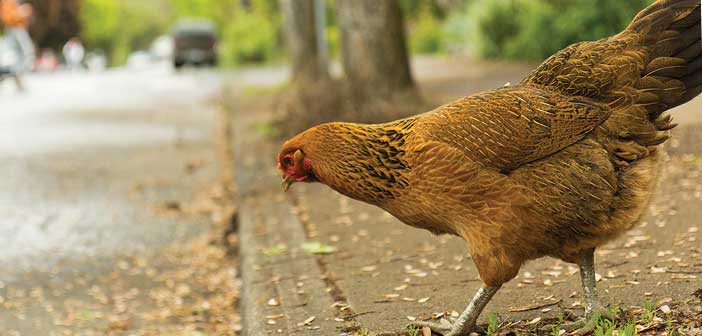GORE BAY—The Manitoulin Planning Board (MPB) has agreed it is willing to look at some type of weighted voting process, as has been proposed by the Northeast Town.
“My municipality (Burpee-Mills), like Gore Bay, had concerns on how and what criteria would be set up if we went to a weighted voting process,” said MPB Chair Ken Noland at a meeting Tuesday. “If, for instance, a business was looking at a municipality to locate and a request for a weighted vote was made by Little Current and Central Manitoulin, and they both were also vying for the same business in their municipality, they could carry vote and stop the business from locating in another municipality. If we decide to go with a weighted vote process, there has to be criteria set up.”
Austin Hunt said, “I assumed this type of request would only be made in special circumstances.”
“This is what we need to set up, a criteria as to when this type of vote would take place and what the special circumstances would be,” said Mr. Noland. “There needs to be a set of criteria.”
It had been recommended that if a weighted vote was taken it would be called for by the affected municipality only.
“Absolutely, and this would alleviate all of the concerns raised,” said Brad Ham.
“There would have to be safeguards in place,” said Gary Brown.
In a letter to the planning board dated March 24, 2014, Northeast Town Mayor Al MacNevin outlined that the Northeast Town had requested permission from the province to create its own planning authority but were told a solution should be worked out between the municipality and the planning board. The Northeast Town said it would still prefer to have its own planning authority, however they are proposing a new governance model.
Currently, the planning board has nine municipalities with one appointed representative from each, wrote Mr. MacNevin. The province appoints two representatives from the unorganized townships for a total of 11 members who each have one vote. “To illustrate the unfairness of the current model we only have to look at the population numbers and see that the Northeast Town has 32 percent of the population yet it only gets less than 10 percent of the voting power on issues that impacts its citizens. The percentages are relatively the same using households or assessment numbers for comparison as well.”
“We are proposing a new model that reflects the realities of both our population and our financial contribution to the planning board,” wrote Mr. MacNevin. He provided a model that provides representation using population numbers. “This model would require additional seats for the Northeat Town and Central Manitoulin and the combining of seats for some of the municipalities and the unorganized townships. In the case of MPB it could still have the same number of members but when a vote is taken each member would vote with the strength of their population,”wrote Mr. MacNevin. “All votes are conducted in the normal manner (for example one vote per member) unless any member requests a per capita vote. Having a preprinted sheet with the population beside the community name would allow for quick tally to determine the result when requested. The procedure would be similar to the recorded vote methodology that municipalities currently use.”
Under the proposal, the Northeast Town would have four seats on the board by population with votes by population being 3.55 and Central Manitoulin would have three. Assiginack, Gore Bay, Gordon/Barrie Island, Billings and Tehkummah would have one member each. Burpee/Mills, Cockburn Island, Robinson and Dawson would share one vote.
“I still think guidelines need to be set in place,” said Mr. Noland.
Elva Carter, MPB secretary, said a request had been forwarded to the Ministry of Municipal Affairs and Housing (MMAH) as to whether some type of new governance model could be set, but she hasn’t received a response from the province and doesn’t expect to until after the upcoming provincial election.
Lyle Addison said Dawson-Robinson concerns have also been raised regarding their representation. The government pays about 11 percent of the costs of the planning board for the townships, “so our weighted vote should be 11-12 percent.”
However, Mr. Ham said even with weighted voting, it is not like anyone would not get a vote on an issue.
“We just feel that on the West End where 12 percent of the planning board costs are paid, that our vote should hold as much weight as, say, areas like Tehkummah,” said Mr. Addison.
“First we will have to see if the province says it is possible to change the voting structure,” said Mr. Noland. “Second, the board would have to set the procedures and criteria for this.”
Mr. St. Denis said, “there are different ways of arriving at a proportion. There is merit to holding further discussions on ways of getting from point A to B.”
Bruce Wood said if further discussions would help, “maybe we would be able to come to a solution that everyone would be satisfied with.”
“There is a provincial policy statement that we are supposed to follow,” said Mr. Osborne, “with every area getting a vote, and this shouldn’t change even with a new model.”
“I would vote that we proceed to look at having a new weighted voting policy,” said Mr. Ham.
“I wonder if we should be voting on any of this before we see if the province will allow it,” said Mr. Noland.
Mr. MacNevin, who was in attendance at the meeting with the Northeast Town CAO Dave Williamson, said, “I don’t know if everyone has had a chance to read what I sent to the planning board.” He pointed out the board would still be an 11 member board, but we could look at having some kind of weighted voting model put in place.”
“If it’s voted down we will have to go back to the MMAH and say we tried our best but our proposal is not going to get there,” said Mr. MacNevin.
Mr. St. Denis pointed out the MPB itself has not expressed its opinion on the Northeast Town proposal and that this should take place. “If the idea is not given the go ahead by the province then so be it, but we should take a stance on it.”
“We (Assiginack) have no problem with some type of proportional weighted vote,” stated Mr. Ham. “And if we wait for an answer from the ministry on this we could be waiting a long time.”
“We need a clear stance from the planning board on this, nay or yay,” said Mr. Brown.
Mr. Noland suggested a motion be put forward that the planning board explore the option.
“It could say the planning board, subject to working out the guidelines, is willing to look at some form of weighted voting,” recommended Mr. St. Denis.
Mr. Ham said he would second such a motion.
“But if we are going to take this back to our councils, shouldn’t it be with the actual process being considered?” asked Mr. Noland.
“That’s what councils need, meat on the bone as to what this will all entail,” agreed Mr. Brown.
A motion was carried that the MPB would explore options concerning having a weighted voted process, with the actual procedures to be worked out.
Mr. Ham, who seconded the motion, said by passing the motion, “then we can work out all the nuts and bolts on this.”





